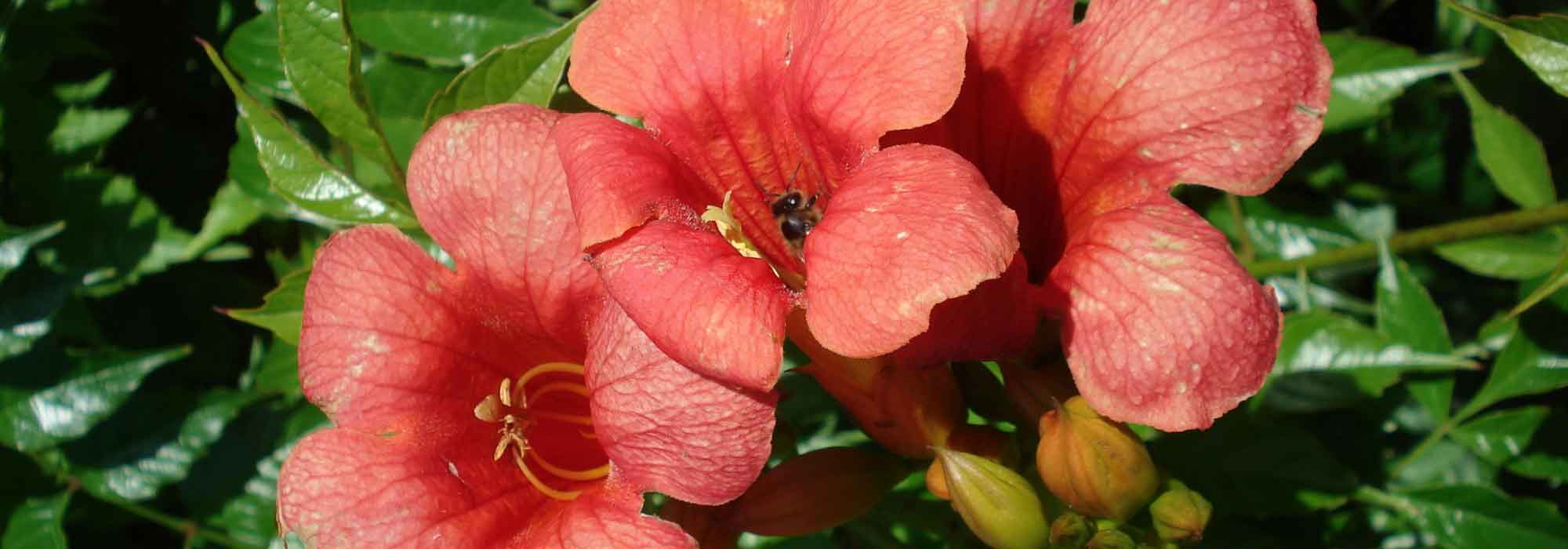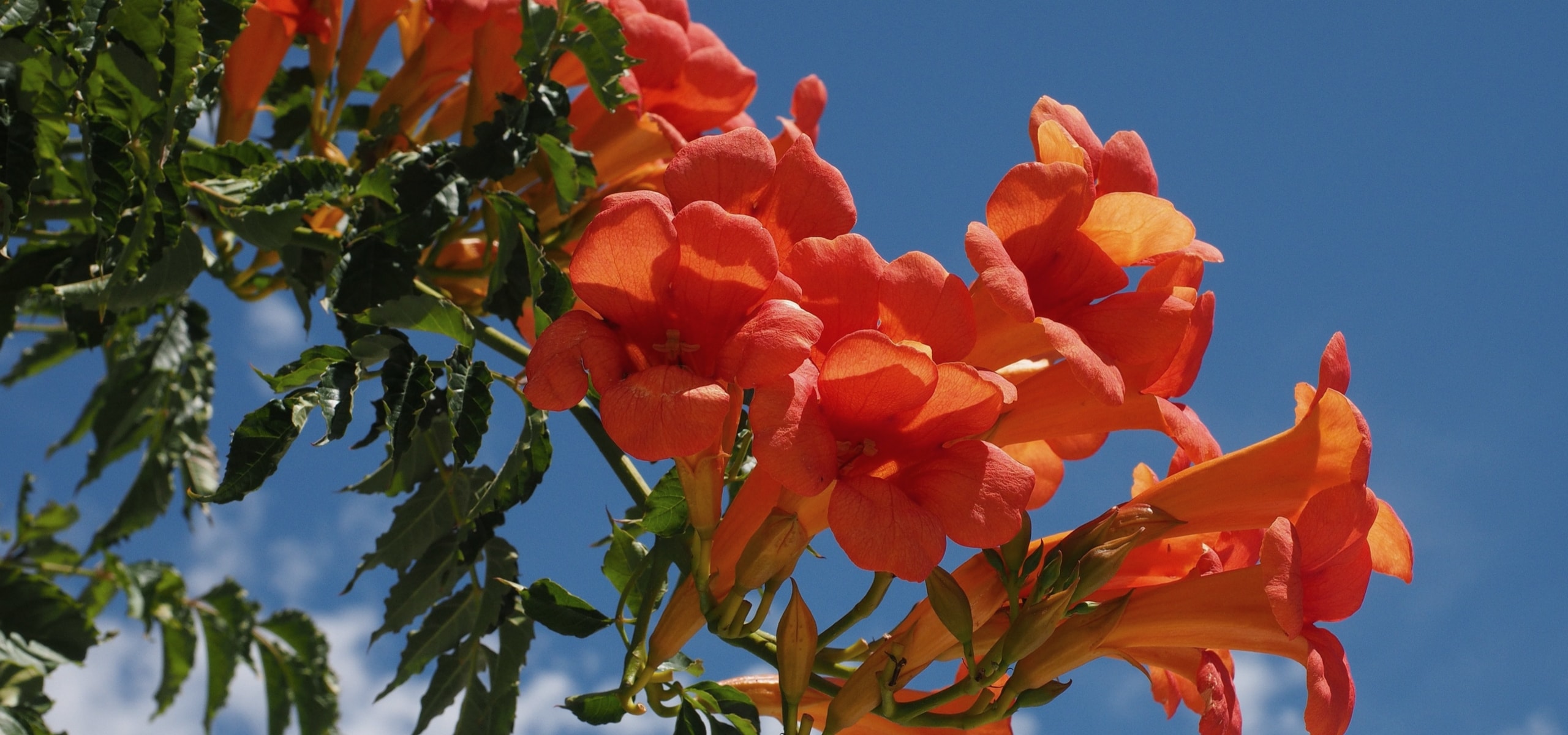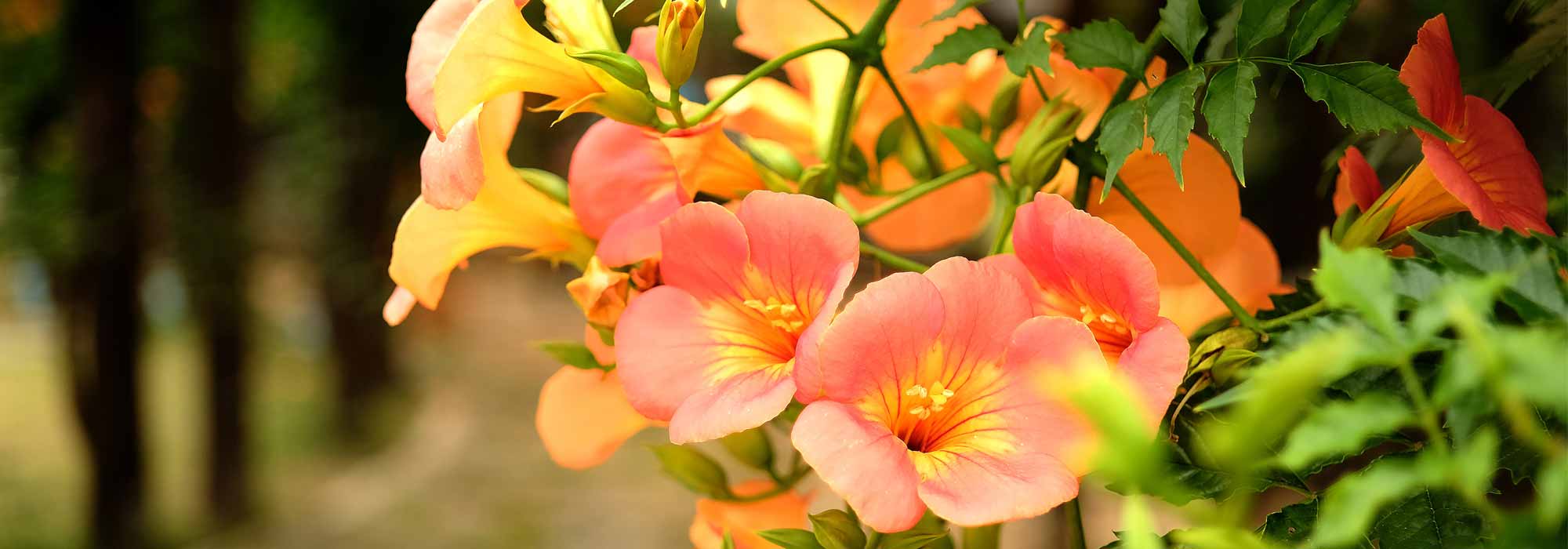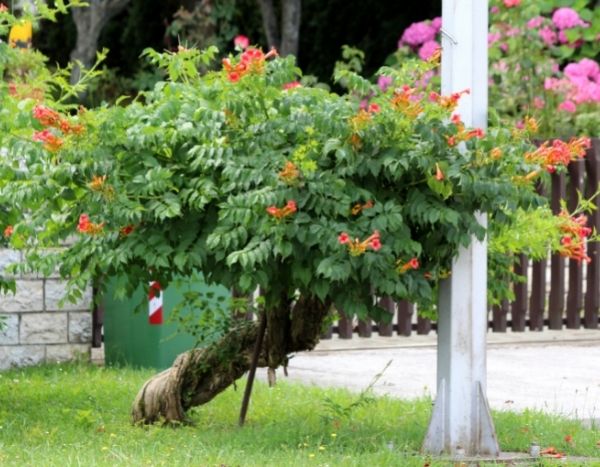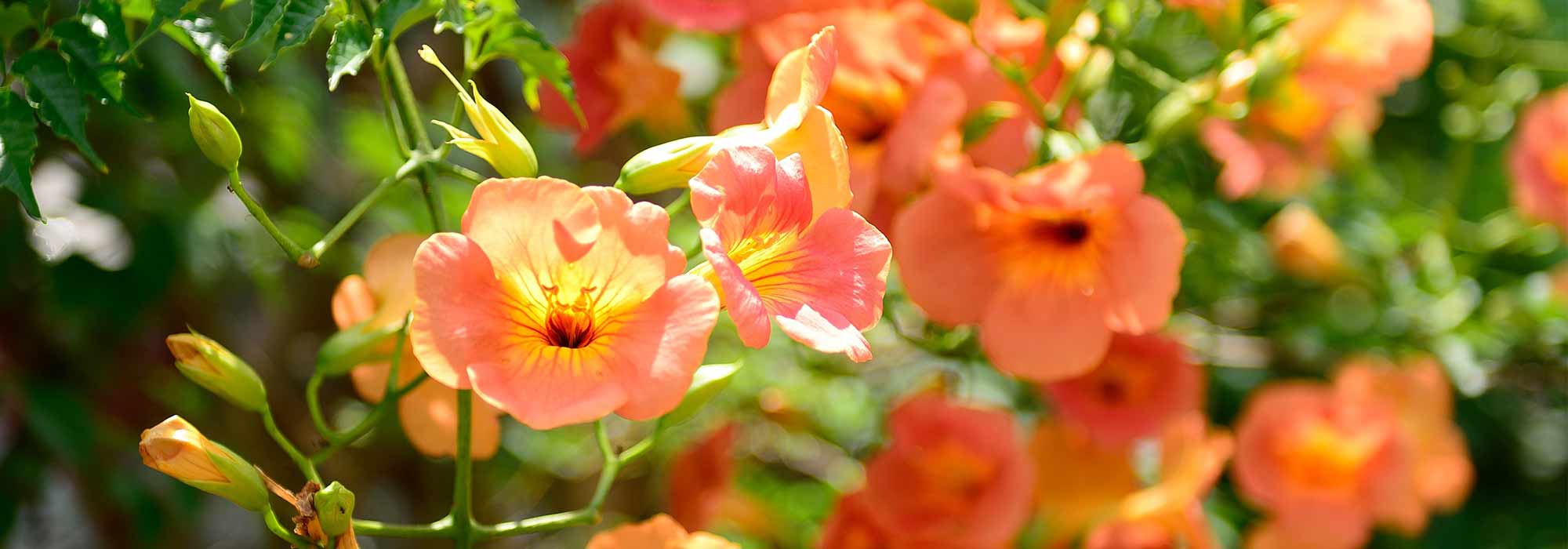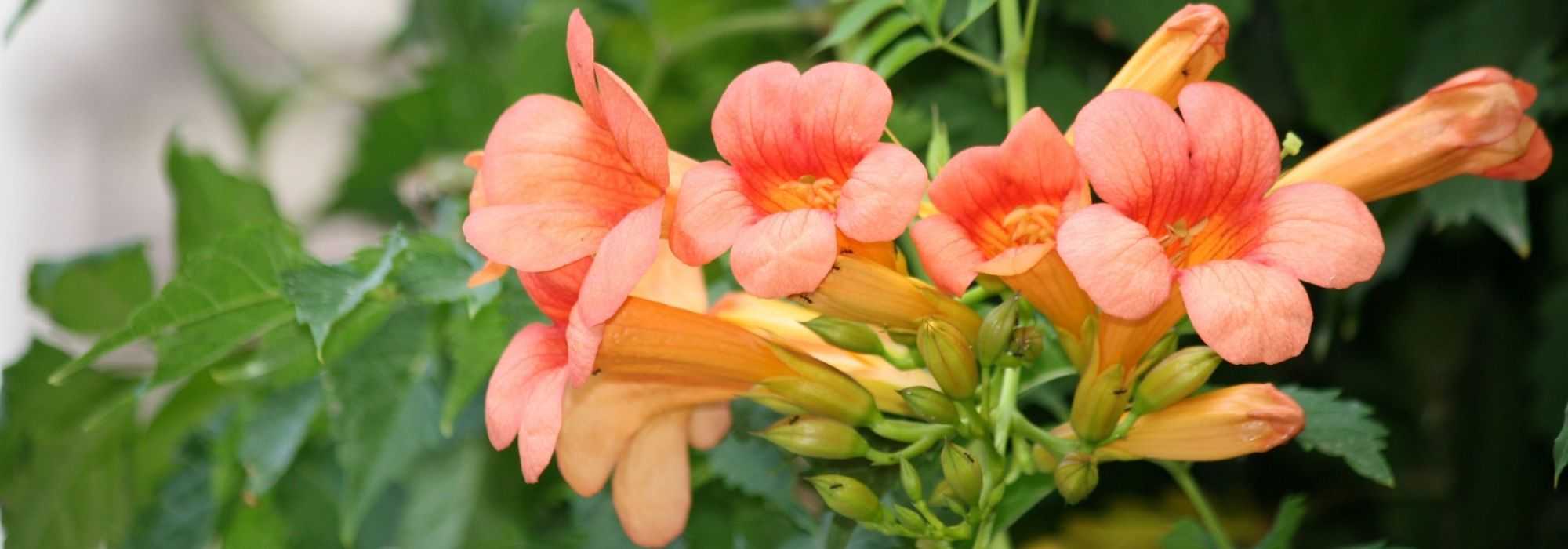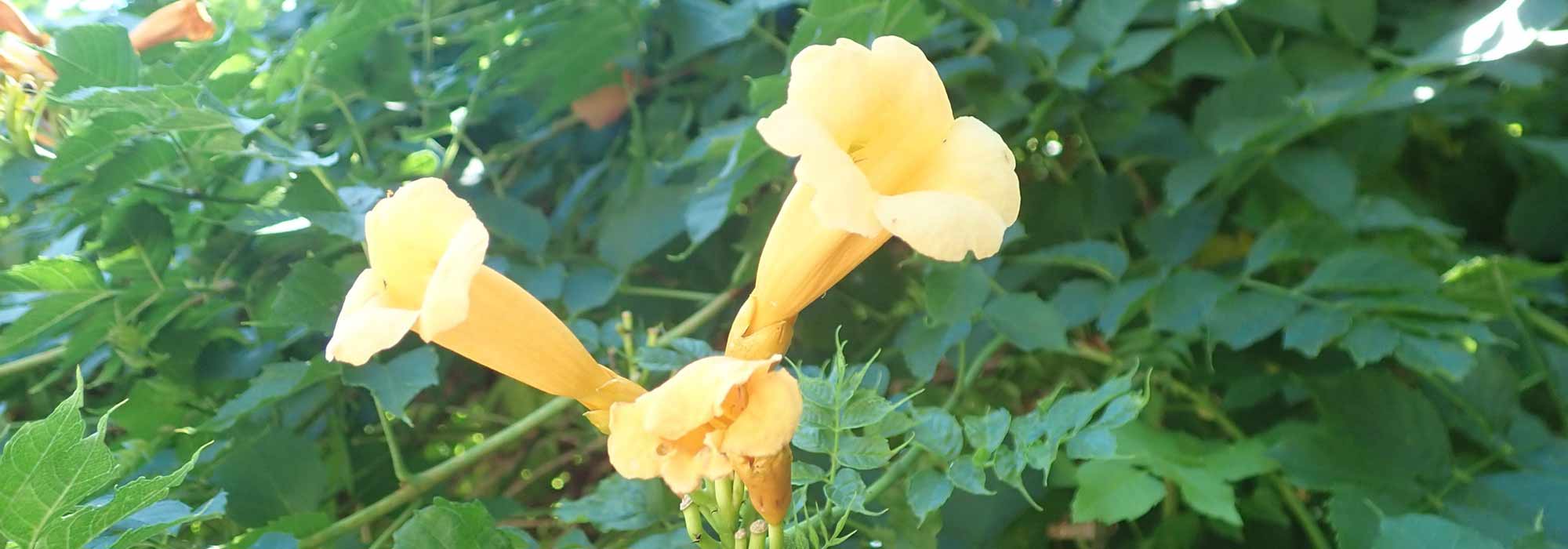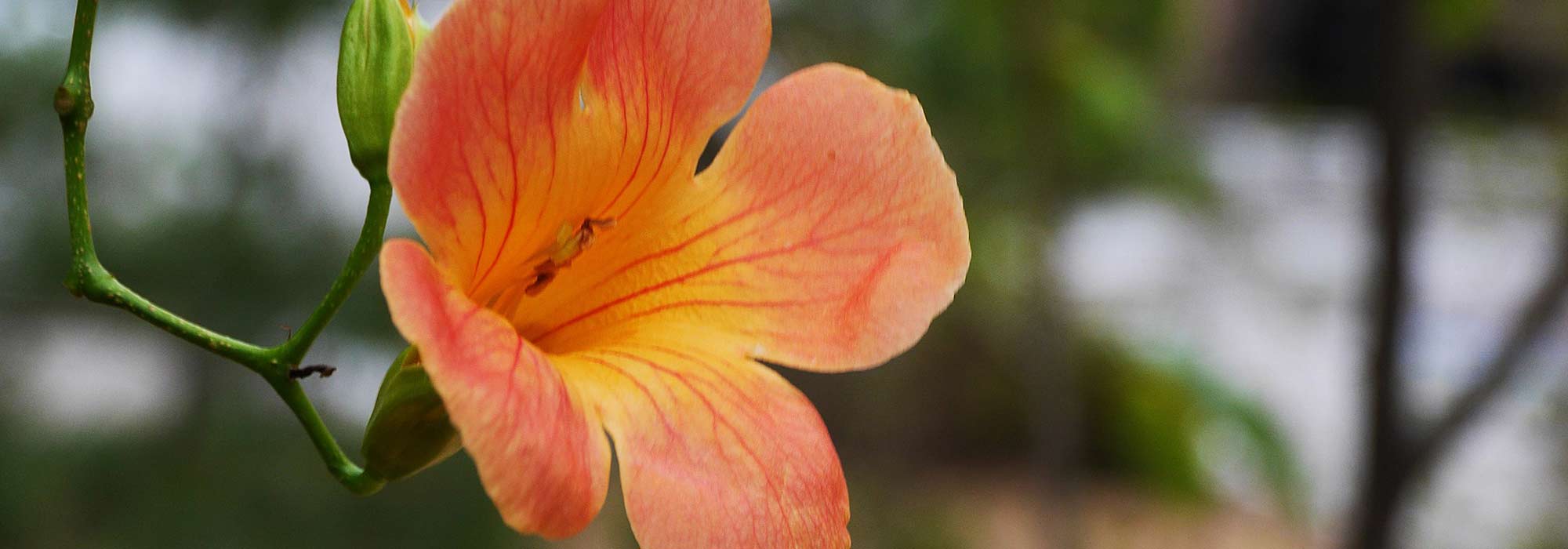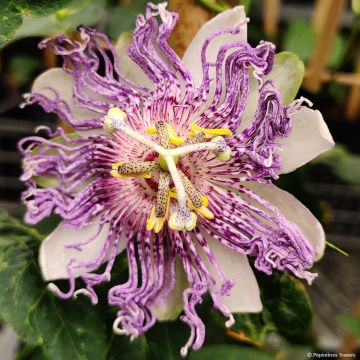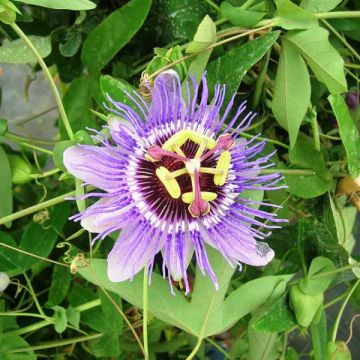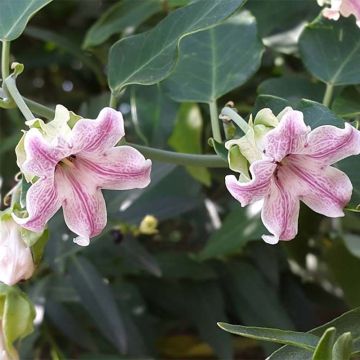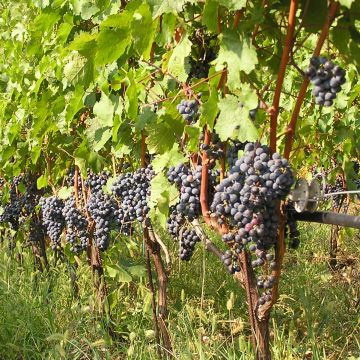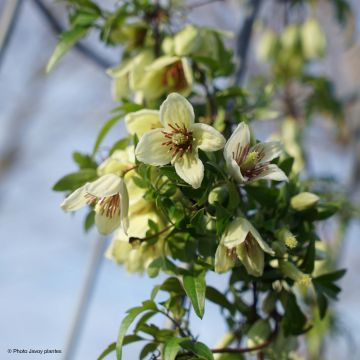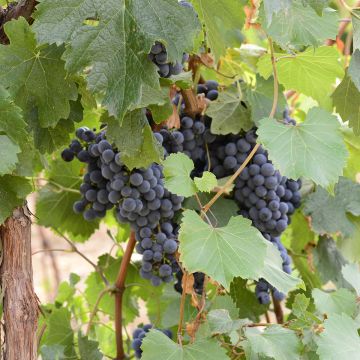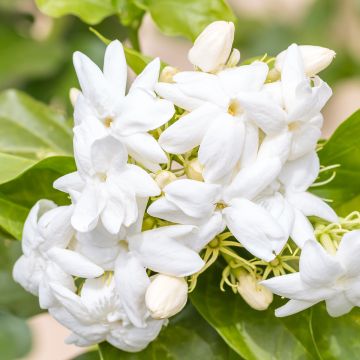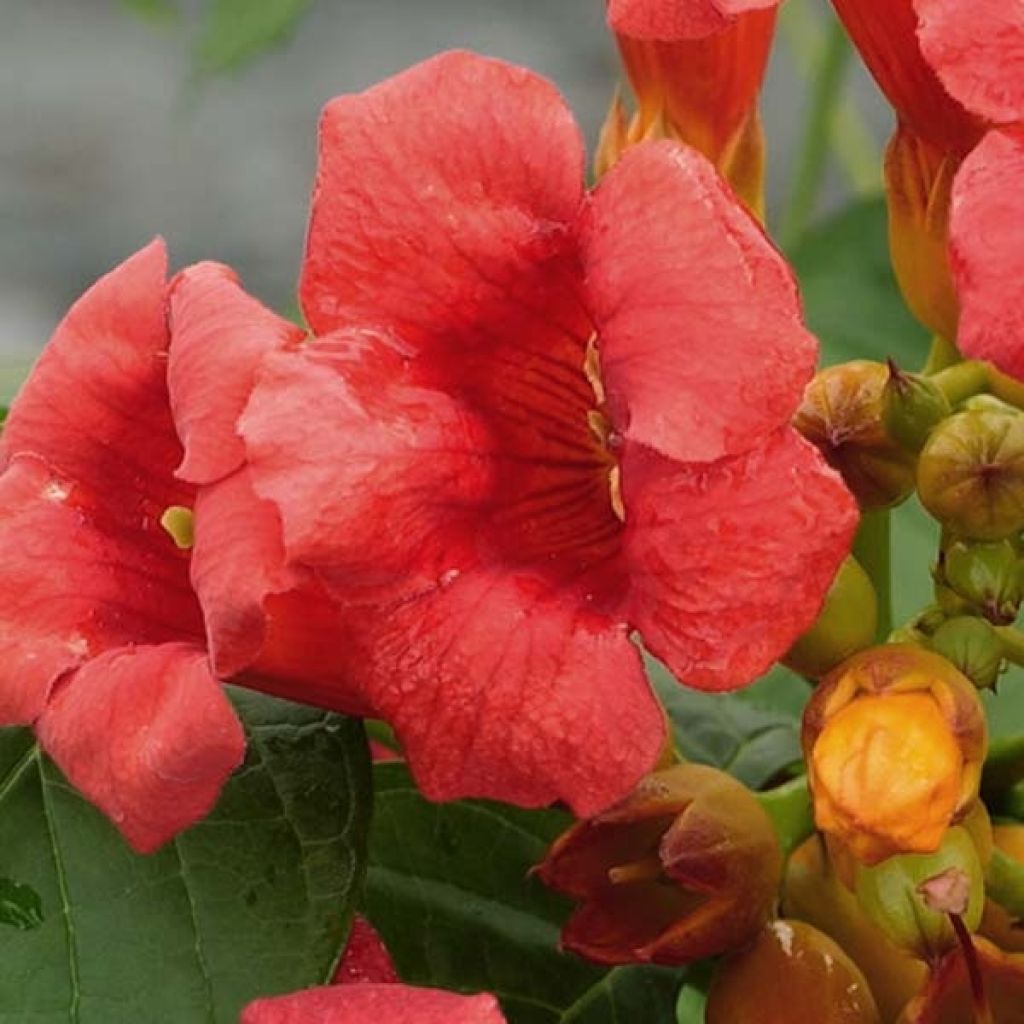

Campsis radicans Stromboli - Trumpet Vine


Campsis radicans Stromboli - Trumpet Vine
Campsis radicans Stromboli - Trumpet Vine
Campsis radicans Stromboli
Trumpet Vine, Trumpet Creeper, Trumpet Climber Trumpet Honeysuckle, Virginian Trumpet Flower
The plant I collected a week ago has buds on 2 branches, the rest is still dormant. I will see later if all the branches are alive and well.
MARIE LUCE, 28/03/2023
Special offer!
Receive a €20 voucher for any order over €90 (excluding delivery costs, credit notes, and plastic-free options)!
1- Add your favorite plants to your cart.
2- Once you have reached €90, confirm your order (you can even choose the delivery date!).
3- As soon as your order is shipped, you will receive an email containing your voucher code, valid for 3 months (90 days).
Your voucher is unique and can only be used once, for any order with a minimum value of €20, excluding delivery costs.
Can be combined with other current offers, non-divisible and non-refundable.
Home or relay delivery (depending on size and destination)
Schedule delivery date,
and select date in basket
This plant carries a 6 months recovery warranty
More information
We guarantee the quality of our plants for a full growing cycle, and will replace at our expense any plant that fails to recover under normal climatic and planting conditions.
Would this plant suit my garden?
Set up your Plantfit profile →
Description
The Trumpet Creeper or Campsis radicans 'Stromboli' is a lovely form with blood-red flowers and rather early flowering of this sturdy climber also known as Trumpet Vine or Virginia Jasmine. Its clusters of shiny flowers bloom from July onwards, throughout the summer, on a fairly wide, bright green foliage that is quite elegant. Very easy to grow in all regions, this trumpet creeper also has the advantage of attaching itself to its support, like ivy, which makes it very useful for covering a wall or reviving a dead tree for example. Its moderate growth allows it to be accommodated in a small-sized garden, or even in a large pot.
Campsis radicans, from the Bignoniaceae family, is native to the state of Virginia in the southeastern United States, specifically from a geographical area covering Missouri, Texas, and Virginia. In the wild, it can be found in wooded areas. Not prone to diseases and pests, Campsis radicans tolerates cold weather as well as heat and drought once well established. It is undemanding in terms of soil, as long as it is deep enough to accommodate its fairly developed root system. 'Stromboli' was selected in Nantes by Minier in 2006.
It is a sarmentous shrub with slightly suckering roots, and its growth is quite fast. When mature, Campsis Stromboli will reach about 6m (20ft) in height and 4m (13ft) in width. The long branches bear leaves divided into 7 to 11 ovate lanceolate leaflets, with toothed edges, in a bright green colour. The foliage turns golden yellow in autumn before falling off. The stems produce very short and close adventitious roots that allow the plant to attach itself to a tree or a wall. Flowering occurs from July to September, on the new shoots. It takes the form of terminal clusters (or cymes) consisting of 4 to 12 very bright red flowers, in the shape of long trumpets. Each flower is composed of a long tubular calyx spreading into 5 lobes that reveal a prominent pistil. After being pollinated by insects, the flowers are followed by brown pods containing a large number of small winged seeds that will be dispersed by the wind. With age, the copper-brown bark that covers the branches peels off in flakes.
Campsis radicans Stromboli is a good wall covering plant in a sunny position, a very pretty solution for fences and utility constructions, and can also be grown in a large container to decorate patios and balconies. For example, you can associate it with other unique climbing plants such as Akebia quinata Silver Bells, Actinidia kolomikta, Holboellia coriacea, or Clematis Blue Angel, which is very blue, to create a scene full of colours.
Campsis radicans Stromboli - Trumpet Vine in pictures
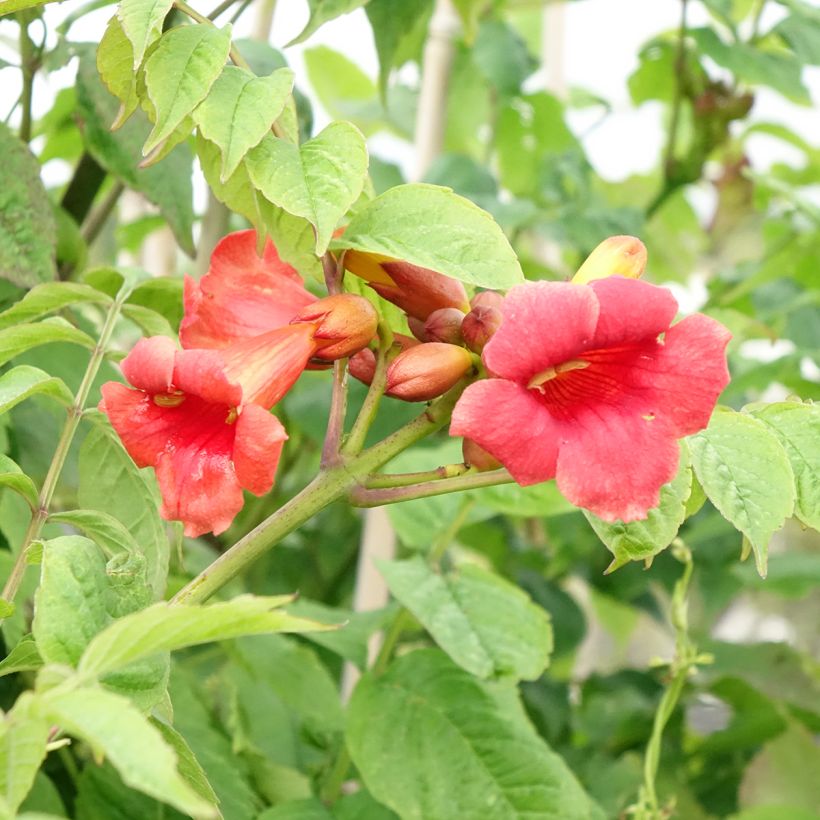

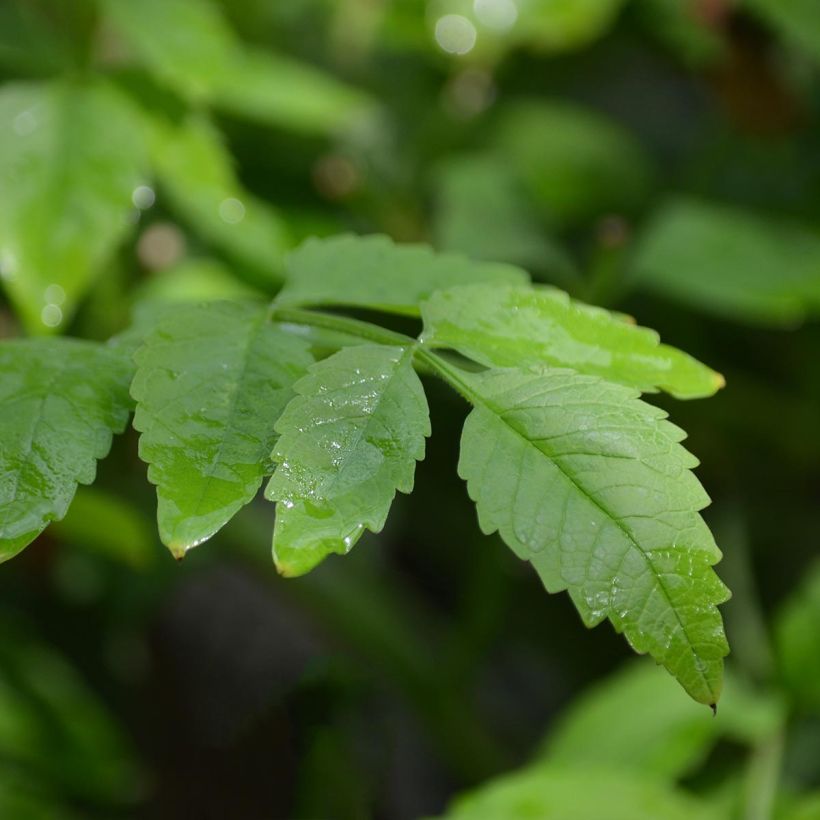

Plant habit
Flowering
Foliage
Botanical data
Campsis
radicans
Stromboli
Bignoniaceae
Trumpet Vine, Trumpet Creeper, Trumpet Climber Trumpet Honeysuckle, Virginian Trumpet Flower
Cultivar or hybrid
Planting and care
Campsis radicans Stromboli should be planted in spring or early autumn in a fertile, deep, moist but well-drained soil, preferably against a sunny wall and sheltered from cold winds in regions with very cold winters. It can tolerate a slightly shadier exposure in a warm climate. Once well-established, this plant can withstand heat and drought very well in all regions. Prune the branches in late March by three-quarters of their length to promote bushier growth. Protect young plants from severe frost with a mulch in cold regions. The stump can withstand -20°C (-4°F), while the stems can withstand -15°C (5°F). This trumpet vine is not very susceptible to diseases and parasites.
Planting period
Intended location
Care
Planting & care advice
-
, onOrder confirmed
Reply from on Promesse de fleurs
Similar products
Haven't found what you were looking for?
Hardiness is the lowest winter temperature a plant can endure without suffering serious damage or even dying. However, hardiness is affected by location (a sheltered area, such as a patio), protection (winter cover) and soil type (hardiness is improved by well-drained soil).

Photo Sharing Terms & Conditions
In order to encourage gardeners to interact and share their experiences, Promesse de fleurs offers various media enabling content to be uploaded onto its Site - in particular via the ‘Photo sharing’ module.
The User agrees to refrain from:
- Posting any content that is illegal, prejudicial, insulting, racist, inciteful to hatred, revisionist, contrary to public decency, that infringes on privacy or on the privacy rights of third parties, in particular the publicity rights of persons and goods, intellectual property rights, or the right to privacy.
- Submitting content on behalf of a third party;
- Impersonate the identity of a third party and/or publish any personal information about a third party;
In general, the User undertakes to refrain from any unethical behaviour.
All Content (in particular text, comments, files, images, photos, videos, creative works, etc.), which may be subject to property or intellectual property rights, image or other private rights, shall remain the property of the User, subject to the limited rights granted by the terms of the licence granted by Promesse de fleurs as stated below. Users are at liberty to publish or not to publish such Content on the Site, notably via the ‘Photo Sharing’ facility, and accept that this Content shall be made public and freely accessible, notably on the Internet.
Users further acknowledge, undertake to have ,and guarantee that they hold all necessary rights and permissions to publish such material on the Site, in particular with regard to the legislation in force pertaining to any privacy, property, intellectual property, image, or contractual rights, or rights of any other nature. By publishing such Content on the Site, Users acknowledge accepting full liability as publishers of the Content within the meaning of the law, and grant Promesse de fleurs, free of charge, an inclusive, worldwide licence for the said Content for the entire duration of its publication, including all reproduction, representation, up/downloading, displaying, performing, transmission, and storage rights.
Users also grant permission for their name to be linked to the Content and accept that this link may not always be made available.
By engaging in posting material, Users consent to their Content becoming automatically accessible on the Internet, in particular on other sites and/or blogs and/or web pages of the Promesse de fleurs site, including in particular social pages and the Promesse de fleurs catalogue.
Users may secure the removal of entrusted content free of charge by issuing a simple request via our contact form.
The flowering period indicated on our website applies to countries and regions located in USDA zone 8 (France, the United Kingdom, Ireland, the Netherlands, etc.)
It will vary according to where you live:
- In zones 9 to 10 (Italy, Spain, Greece, etc.), flowering will occur about 2 to 4 weeks earlier.
- In zones 6 to 7 (Germany, Poland, Slovenia, and lower mountainous regions), flowering will be delayed by 2 to 3 weeks.
- In zone 5 (Central Europe, Scandinavia), blooming will be delayed by 3 to 5 weeks.
In temperate climates, pruning of spring-flowering shrubs (forsythia, spireas, etc.) should be done just after flowering.
Pruning of summer-flowering shrubs (Indian Lilac, Perovskia, etc.) can be done in winter or spring.
In cold regions as well as with frost-sensitive plants, avoid pruning too early when severe frosts may still occur.
The planting period indicated on our website applies to countries and regions located in USDA zone 8 (France, United Kingdom, Ireland, Netherlands).
It will vary according to where you live:
- In Mediterranean zones (Marseille, Madrid, Milan, etc.), autumn and winter are the best planting periods.
- In continental zones (Strasbourg, Munich, Vienna, etc.), delay planting by 2 to 3 weeks in spring and bring it forward by 2 to 4 weeks in autumn.
- In mountainous regions (the Alps, Pyrenees, Carpathians, etc.), it is best to plant in late spring (May-June) or late summer (August-September).
The harvesting period indicated on our website applies to countries and regions in USDA zone 8 (France, England, Ireland, the Netherlands).
In colder areas (Scandinavia, Poland, Austria...) fruit and vegetable harvests are likely to be delayed by 3-4 weeks.
In warmer areas (Italy, Spain, Greece, etc.), harvesting will probably take place earlier, depending on weather conditions.
The sowing periods indicated on our website apply to countries and regions within USDA Zone 8 (France, UK, Ireland, Netherlands).
In colder areas (Scandinavia, Poland, Austria...), delay any outdoor sowing by 3-4 weeks, or sow under glass.
In warmer climes (Italy, Spain, Greece, etc.), bring outdoor sowing forward by a few weeks.






























